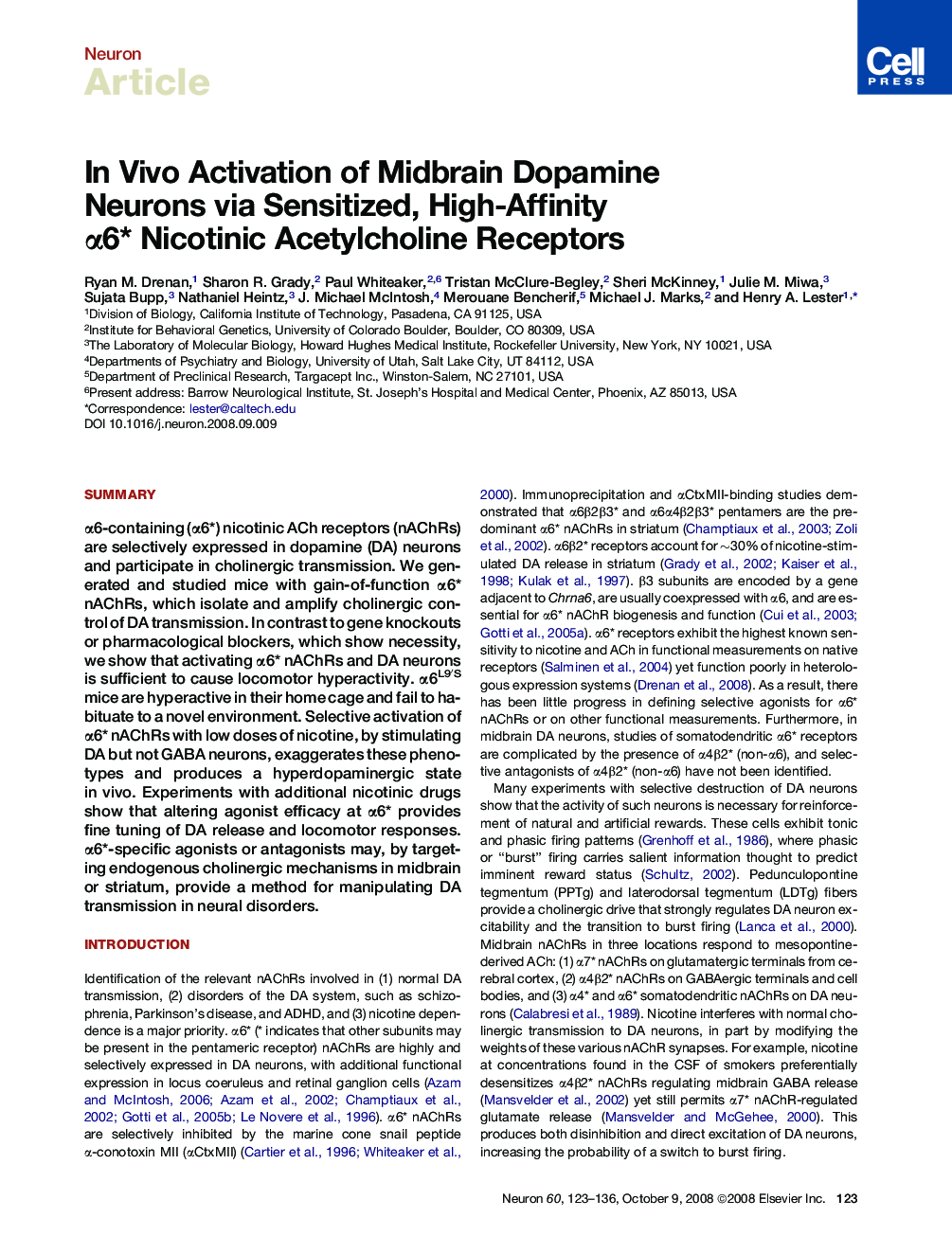| Article ID | Journal | Published Year | Pages | File Type |
|---|---|---|---|---|
| 4323093 | Neuron | 2008 | 14 Pages |
Summaryα6-containing (α6∗) nicotinic ACh receptors (nAChRs) are selectively expressed in dopamine (DA) neurons and participate in cholinergic transmission. We generated and studied mice with gain-of-function α6∗ nAChRs, which isolate and amplify cholinergic control of DA transmission. In contrast to gene knockouts or pharmacological blockers, which show necessity, we show that activating α6∗ nAChRs and DA neurons is sufficient to cause locomotor hyperactivity. α6L9′S mice are hyperactive in their home cage and fail to habituate to a novel environment. Selective activation of α6∗ nAChRs with low doses of nicotine, by stimulating DA but not GABA neurons, exaggerates these phenotypes and produces a hyperdopaminergic state in vivo. Experiments with additional nicotinic drugs show that altering agonist efficacy at α6∗ provides fine tuning of DA release and locomotor responses. α6∗-specific agonists or antagonists may, by targeting endogenous cholinergic mechanisms in midbrain or striatum, provide a method for manipulating DA transmission in neural disorders.
